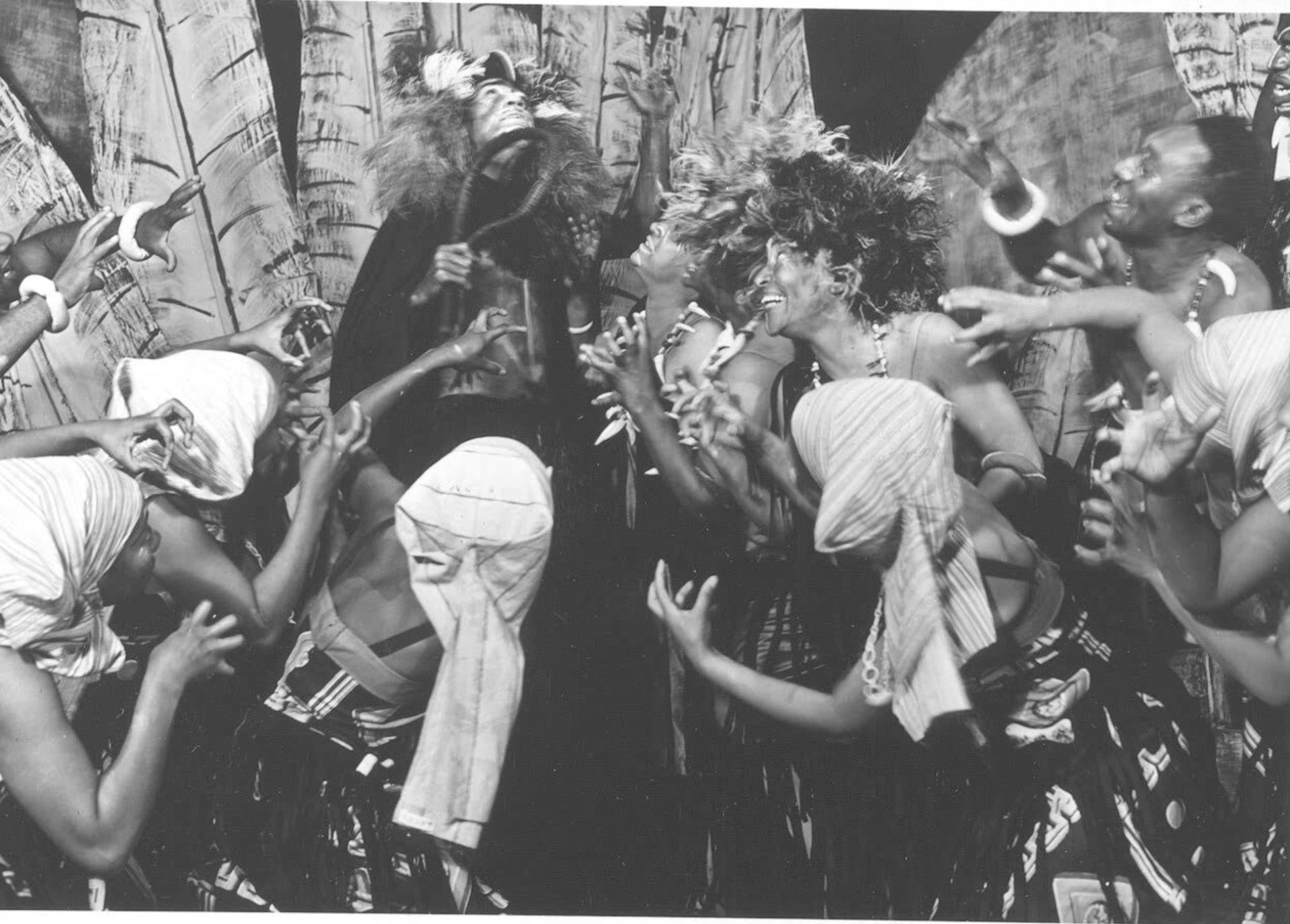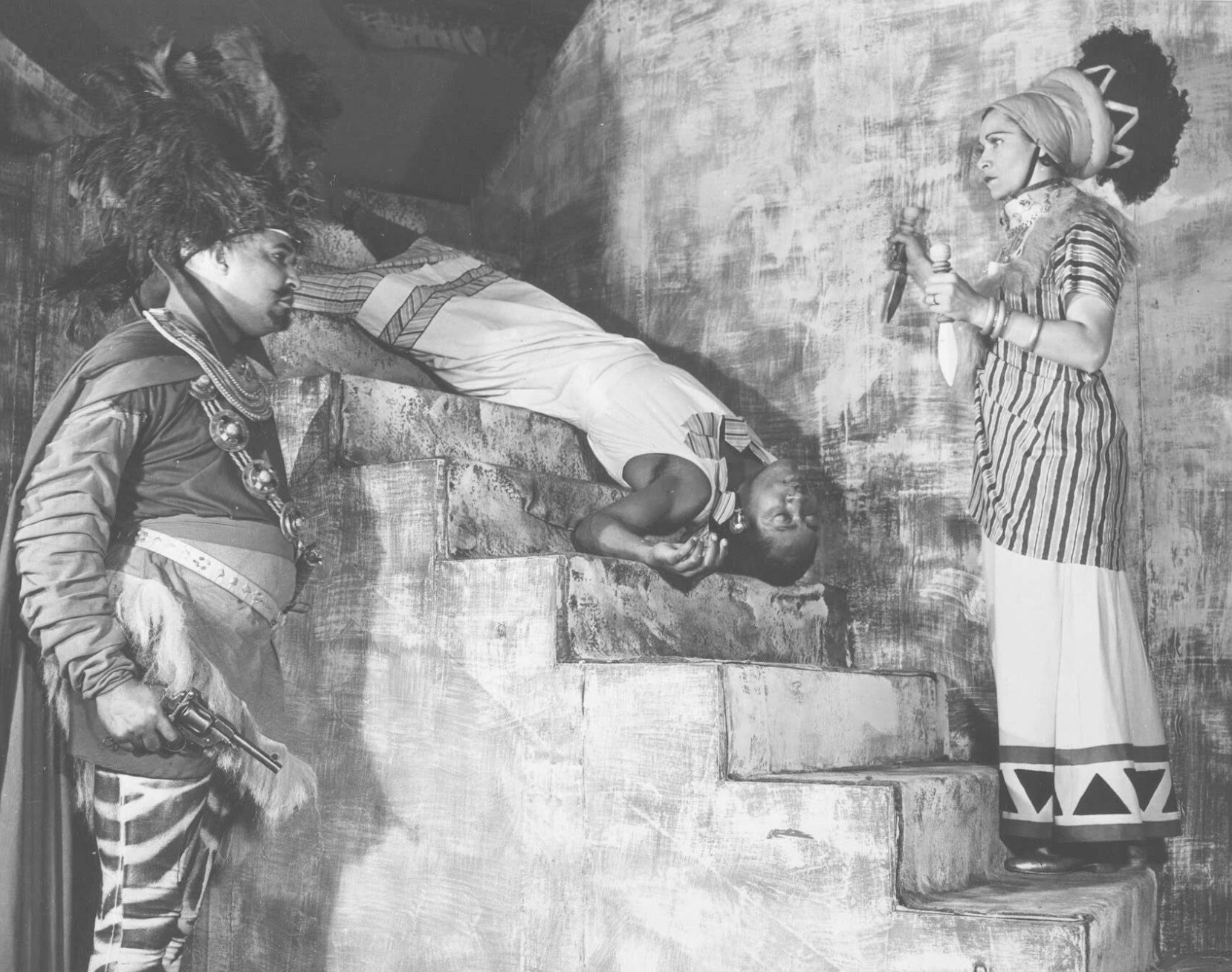On April 14, 1936, anticipation for a new production by the Federal Theatre Project's Negro Unit reached a fever pitch. Over 10,000 people crowded outside the 1,223-seat Lafayette Theater in Harlem. They packed Seventh Avenue for 10 blocks, and halted northbound traffic for over an hour. Ticket scalpers were offering a nearly 300% markup: $3 for two 40-cent tickets. The curtain, slated to rise at 8:45p.m., didn't open until 9:30. What became known as “Voodoo Macbeth,” this all-Black version of William Shakespeare’s famous play came as a direct result of one of the most ambitious legislative relief measures in American history. The FTP supported many different artistic endeavors, including Negro Theater Units throughout the country. Re-imagined in 19th-century Haiti, the New York Negro Unit's wildly successful production of Macbeth in the Spring of 1936 was only its third. This theatrical sensation solidified the FTP's unproven reputation. And as Macbeth toured the nation later that year, it inspired other FTP Negro Units to adapt theater classics. Prior to the FTP, most theaters restricted African-American performers to more vaudeville-based performances for white audiences. But after Macbeth, the Seattle Negro Unit performed an all-Black Lysistrata. When Los Angeles proved unable to host the Macbeth tour, their Unit produced its own adaptation set on the African continent.


1. Unidentified cast members in the Los Angeles production of Macbeth. 2. Jess Lee Brooke as Macbeth and May Turner as Lady Macbeth in the Los Angeles production of Macbeth. 1937. Federal Theatre Project collection. Library of Congress Music Division.
The FTP consumed only .5% of the WPA’s budget, but immediately became a source of political contention. The federal government cancelled funding in 1939, but not before the program had established an enduring legacy. From 1936-1939, the FTP presented 1,200 productions and over 8,000 performances at a cost of approximately $46 million. Over 30 million Americans saw those productions (28% of the country’s population at the time), and generated roughly $2 million in admissions—more revenue than any other WPA project. But just exactly how did this new production of Macbeth "electrify" Harlem? Development of Macbeth quietly began in the Fall of 1935. Hallie Flanagan named John Houseman to lead the FTP’s Negro Unit in New York. Flanagan had wanted to appoint an African American, such as Rose McClendon, whose Negro People's Theatre had inspired the creation of the FTP Negro Unit. But, according to Flanagan, McClendon advised her to hire someone with more experience to first lead the Unit. McClendon became Houseman's co-director. Under her guidance, other Negro Units formed in cities across the country, including Seattle, Hartford, Philadelphia, Newark, Los Angeles, Boston, Raleigh, Birmingham, San Francisco, and Chicago. At the time, the use of "Black" was seen as taboo. "Negro" was understood as the official, preferred term, although disagreement existed on whether to capitalize the "n."
